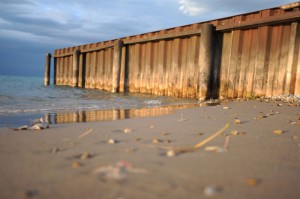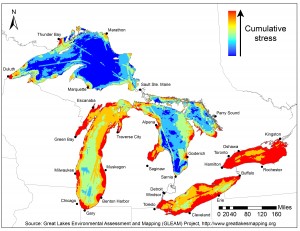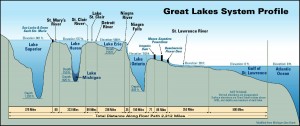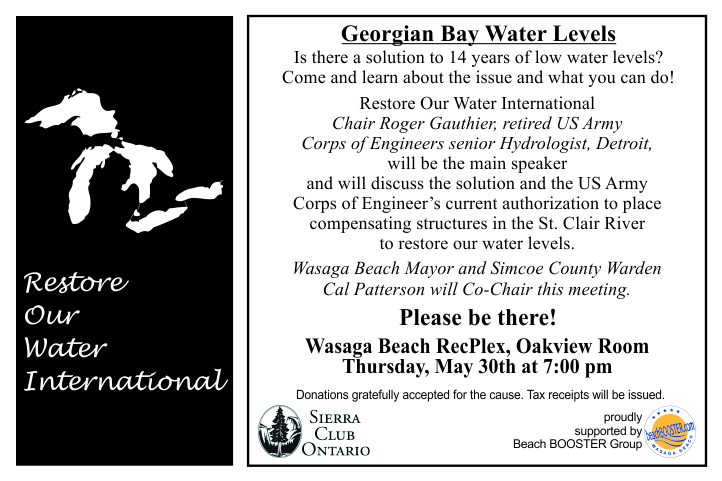
Lake Huron levels have set new record lows, say officials.
Wasaga Beach and Collingwood residents
are interested in current and future Georgian Bay water levels for many reasons so we thought we’d post a bit of background information (sourced directly with thanks to www.cbc.ca via The Current podcast from last Friday) to explain why water levels are such an important issue to all of us.
To find out more, contact David Sweetnam, executive director of Georgian Bay Forever and Bob Duncanson, executive director of The Georgian Bay Association.
The Great Lakes hold 20 per cent of the world’s fresh water. And that percentage is shrinking, threatening fish stocks and wetlands, putting shipping lanes at risk and prompting talk of a crisis in a water system that defines a region and sustains a multi-trillion-dollar economy. There have been many media alarms sounding about this issue, especially since January with interesting articles like this one.
But the proposed solutions pit communities against each other. They also raise concerns about whether we can engineer our way out of a problem many people think is largely of our own making.
Water levels are down all over the Great Lakes and they have been for more than a decade. The Great Lakes have seen water levels ebb and flow before. But many people think what’s happening now is different, that it’s being driven by climate change and other human interventions not nature taking its course. It’s exceptionally bad on Lake Huron, the lake Georgian Bay is attached to.

The red around the Wasaga Beach and Collingwood area of Georgian Bay shows how extremely stressed our area is compared to the rest of the Lake Huron and other Great Lakes areas.
Over the years, various parts of the Great Lakes have been dredged to build harbours and shipping channels. And those interventions seem to have knocked the Great Lakes system out of balance.
Here’s why.
The water in Georgian Bay runs to the southernmost tip of Lake Huron and drains into the St. Clair River. That’s been happening for as long as the Great Lakes have been around about 10,000 years. But about 50 years ago, the St. Clair River was dredged to improve shipping channels. And since then, the water has been draining from Lake Huron a lot faster… apparently too fast.
Roger Gauthier — a retired hydrologist with the US Army Corp of Engineers — explains it:
“If you increase the channel capacity in the St. Clair river, you have an outlet that is essentially leaking … if I can use that term … what you end up doing is you lower Michigan, Huron and Superior. The lakes are out of bounds.”
So, how do you slow down a river?
With underwater speed bumps.
“The original designs were actually done in 1965. You would put in a series of underwater structures, maybe 20-25 of those to essentially act as speed bumps on the bottom of the river that would slow the flow of the water.”
Studies from the US Army Corp of Engineers show those speed bumps would slow the river enough to significantly increase water levels all the way up in Lake Huron. As Roger Gauthier said, the idea has been around for a long time.

This graphic shows how dredging of the St Clair river would obviously have profound effects on Georgian Bay water level maintenance.
But it has been given new life, thanks to the International Joint Commission. It manages the joint interests of Canada and the United States in the Great Lakes. And the Commission is recommending both governments look into putting some kind of structures in the St. Clair River.
To ask questions, gather information and find out how you can help, attend the 7 pm meeting at the RecPlex in Wasaga Beach tonight.

